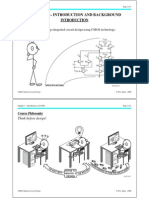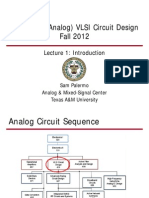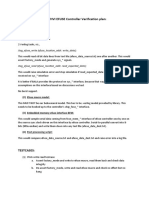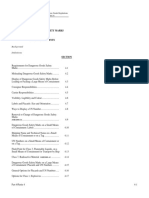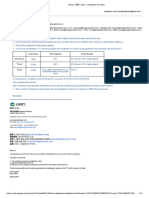0% found this document useful (0 votes)
57 views15 pagesChap 1
The document serves as an introduction to CMOS analog circuit design, outlining its objectives and methodologies. It emphasizes a hierarchical approach to design, covering various topics such as technology overview, circuit analysis techniques, and comparisons between analog and digital circuits. The document also discusses the design process and the importance of precision in modeling and simulation.
Uploaded by
Rathnambiga UnnikrishnanCopyright
© © All Rights Reserved
We take content rights seriously. If you suspect this is your content, claim it here.
Available Formats
Download as PDF, TXT or read online on Scribd
0% found this document useful (0 votes)
57 views15 pagesChap 1
The document serves as an introduction to CMOS analog circuit design, outlining its objectives and methodologies. It emphasizes a hierarchical approach to design, covering various topics such as technology overview, circuit analysis techniques, and comparisons between analog and digital circuits. The document also discusses the design process and the importance of precision in modeling and simulation.
Uploaded by
Rathnambiga UnnikrishnanCopyright
© © All Rights Reserved
We take content rights seriously. If you suspect this is your content, claim it here.
Available Formats
Download as PDF, TXT or read online on Scribd
/ 15







